22 Best Exercises to Improve Your Body Balance
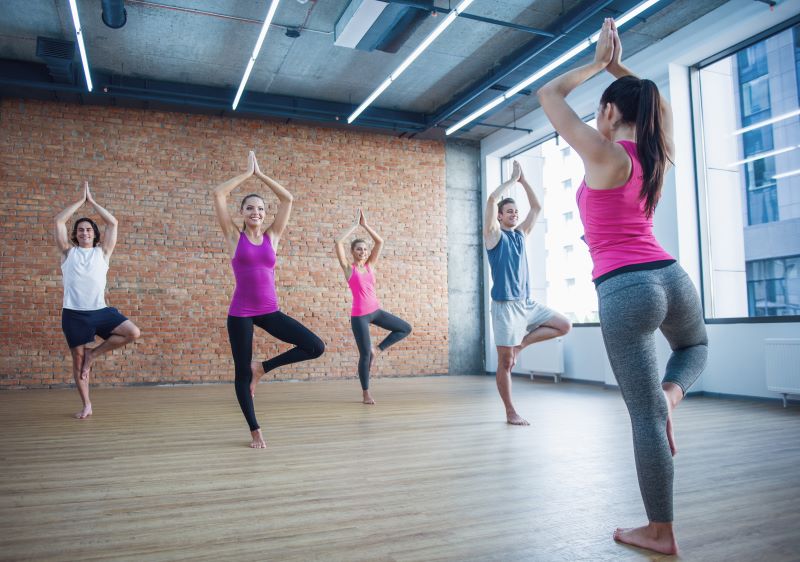
Maintaining proper balance and posture is essential to avoid accidents, especially in older ages. Thus, do not take your good balance for granted. Start exercising to improve your balance, which will pay off in the future. Doctors suggest that older people attempt these exercises to regain their lost balance.
Are you curious to know about the best exercises for maintaining balance? Find out all about it in this article. Also, learn about the causes and symptoms of weak balance before that.

Table of Contents

What is Weak Balance?
Weak balance is the reduced ability to manage one's body position while standing, moving, and changing positions. It may be characterised by swaying, frequent stumbling, or increased chances of falling down. Weak balance usually occurs as a result of a combination of muscle weakness, joint stiffness, and impaired coordination.
Causes and Symptoms of Weak Balance
Weak balance usually comes with age. As bone density reduces, the body fails to maintain good balance. However, young people might also suffer from weak balance because of illnesses or diseases, such as Parkinson’s disease. Accidents and fractures can also cause a weak balance, which can lead to major accidents and injuries.
If you experience the following symptoms, your body has a weak balance:
Vertigo
Presyncope (frequent fainting and lightheadedness)
Feeling like losing balance and falling
Vision changes and blurry eyes
Confusion
22 Best Exercises to Improve Balance
Are you experiencing a loss of balance? Proper balance training can help you out. Here are some of the easiest exercises for you to deal with this situation:
For Kids
Kids usually lack proper body balance in the initial years. They might be able to catch up faster if you engage them with fun activities. Here are some balance training exercises to help your kids improve their balance:
1. Bean Bag Balance
For this simple exercise, place a bean bag or similar item on your kid’s head or shoulder. Then, make them walk straight to maintain the bag’s balance. Once they can do that, ask them to walk in a crisscross pattern to enhance their balance.
2. Musical Statues
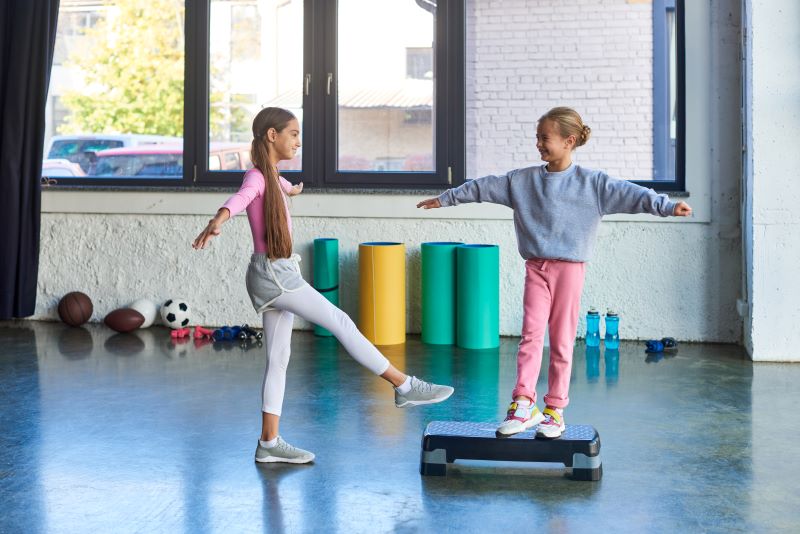
For this exercise, play music and start dancing with your kids. Once the music stops, they should be able to freeze completely. Even if they have one foot in the air, they should not move to win the game. This will encourage them to improve their balance.
3. Heel-toe Walking
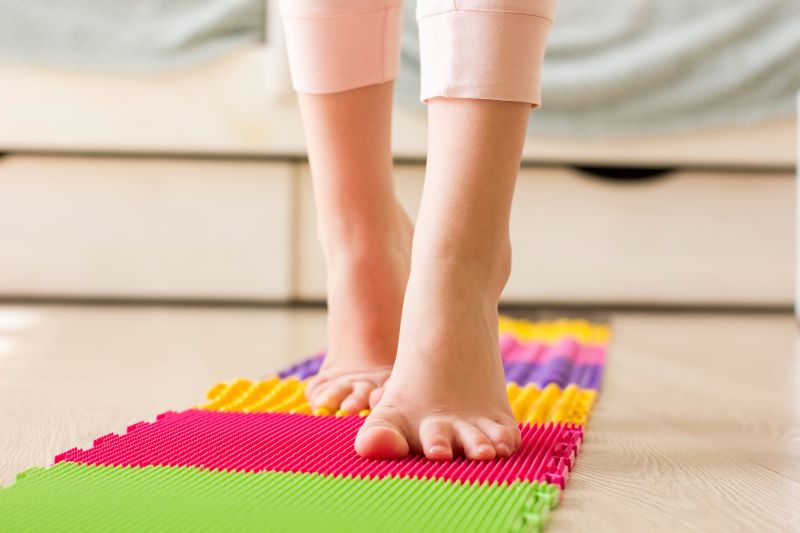
Draw a line on the floor with chalk to maintain a straight line. Now, ask your kids to start walking on this line. They must place the back of their heels against the toes of the opposite foot while walking. They should be slow and walk at least 15-20 steps without losing control.
4. Crab Walking
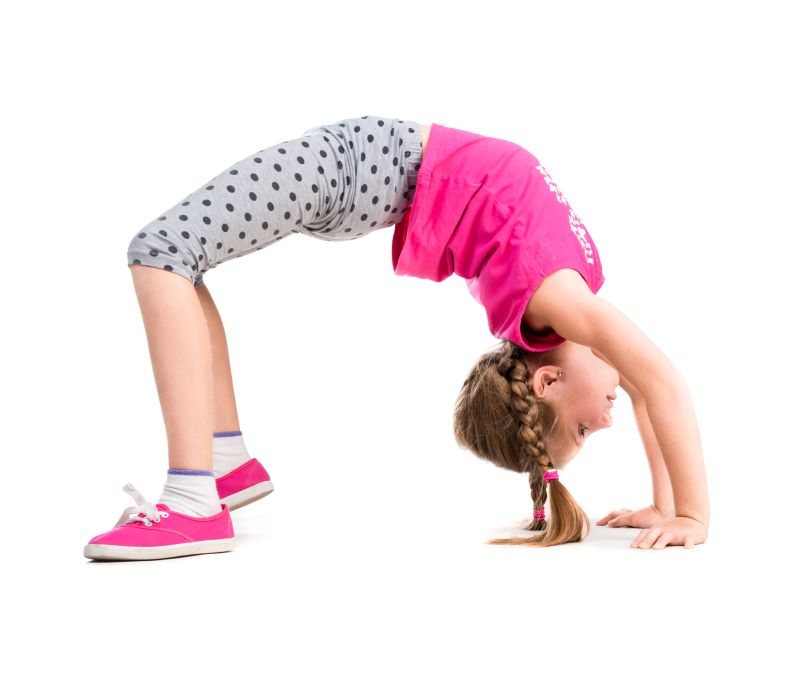
Crab walking is a fun and engaging exercise that helps improve both balance and coordination. To do crab walking, kids start by sitting on the floor with their knees bent and feet flat on the ground.
They then place their hands behind them and lift their hips off the ground, balancing on their hands and feet. In this position, they walk backwards and forwards.
5. Single Leg Stand
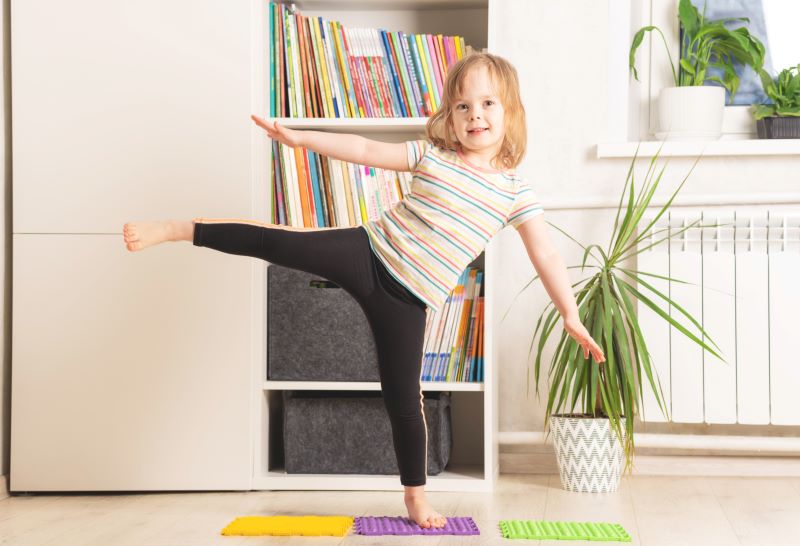
The single-leg stand is a simple yet effective exercise for improving balance and building leg strength. Kids begin by standing tall with their feet together. They then lift one leg off the ground, bending the knee and keeping the foot a few inches above the floor.
The goal is to hold this position for as long as possible, aiming for at least 10-20 seconds before switching legs.
6. Hopscotch
Hopscotch is a classic game that’s excellent for improving balance and coordination. Kids can start by drawing a hopscotch grid on the ground with chalk or, using tape if playing indoors, numbering the squares from 1 to 10.
They take turns hopping through the grid, balancing on one foot for single squares, and using both feet for double squares.
For Adults
Adults usually do not lose body balance. However, they might have a weak balance if they face serious accidents or injuries. The following exercises will help them regain their balance:
7. Sumo Squat
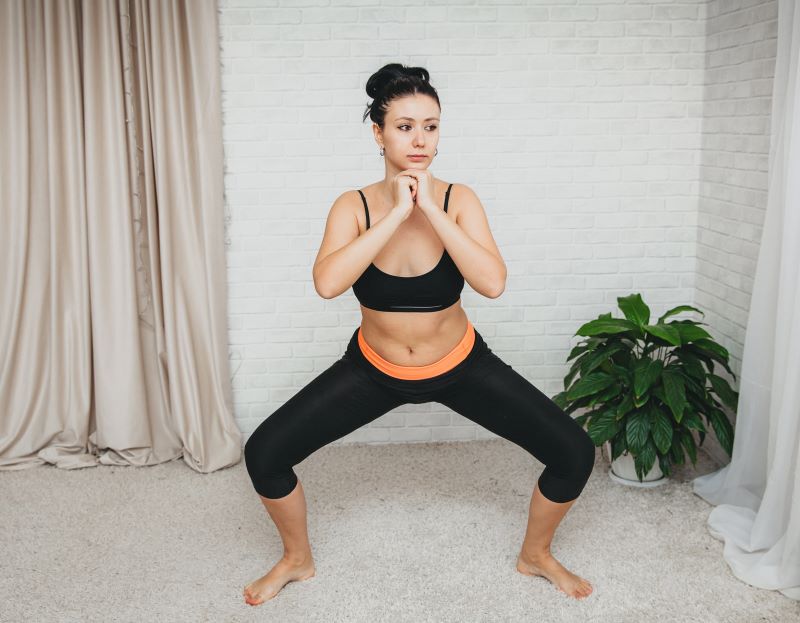
For this body balance exercise, start in a wide stance. Next, bend your knees and hips lower, forming a sumo squat while keeping your torso upright. Now, extend one of the legs and the opposite arm in front, and hold your leg for 2-3 seconds. Keep repeating this process till you start feeling pain or tired.
8. Standing Crunch
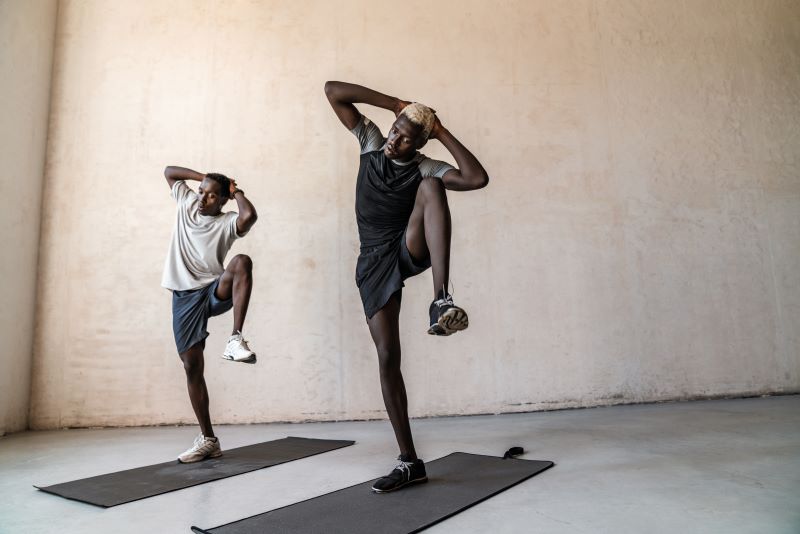
Stand on the ground while balancing on one leg. Keep the other one out in front of you. While keeping your hands overhead, bend your knees at a 90-degree angle. Now, crunch forward and clap your hands under the raised leg once and then over your head. Repeat this process 10-12 times with one leg, then continue with another.
8. T-stand
Stand on the ground with your hands extended in the shape of the letter T. Start balancing the left leg while bending the right knee at a 90-degree angle. Now, start raising your leg in front while keeping your core tight. Next, lower your torso, reach your right hand, and try to touch your left ankle. Return to the initial posture and repeat this procedure with the opposite arms and legs.
10. Arm Sequence With Lifted Heels
Start this exercise by standing on the ground with your feet together. Keep your knees slightly bent and pressed against each other. You can hold lightweight dumbbells while keeping them relaxed on the sides. Start lifting your heels about two inches above the floor, and hold this position while doing a shoulder press. Keep repeating this process with your arms extended and arched lower back.
11. Curtsy Lunge
Stand on the floor, keeping your feet hip-width apart and your fingertips on your ears. The elbows should be open and wide. Next, cross one leg behind you and lower the body into a curtsy lunge. Bring the same leg up and meet the same side elbow as an oblique crunch. Do this without rotating your hips. After repeating it about 10-12 times, switch legs.
12. Single-Leg Deadlift
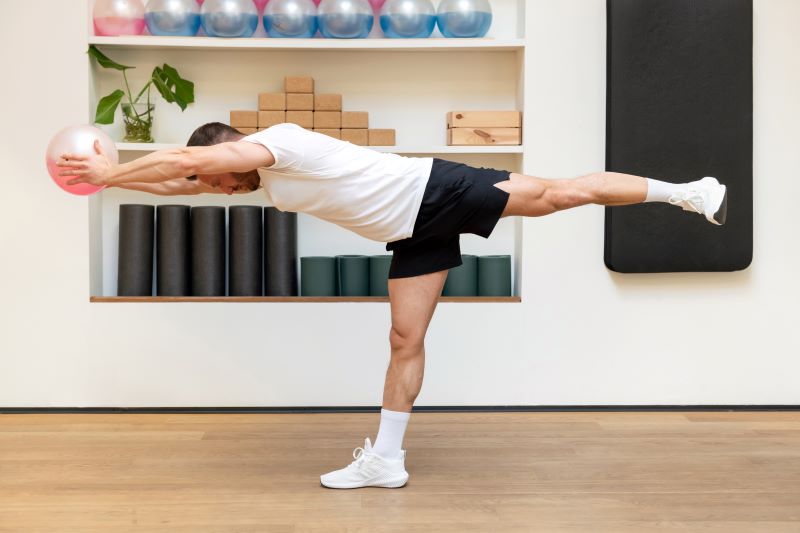
The single-leg deadlift is a balance exercise that also strengthens the hamstrings and glutes. To perform it, stand on one leg with a slight knee bend and lean forward from the hips while extending the opposite leg straight behind you.
Keep your back straight and reach towards the ground with both hands. Return to the starting position and repeat, switching legs after each set.
For Older Adults
Older adults are at the highest risk of losing balance. This can lead to falling and breaking bones, which can be a serious hazard. The following exercises for balance and coordination can be beneficial for them to improve their lost balance:
13. Tightrope Walk
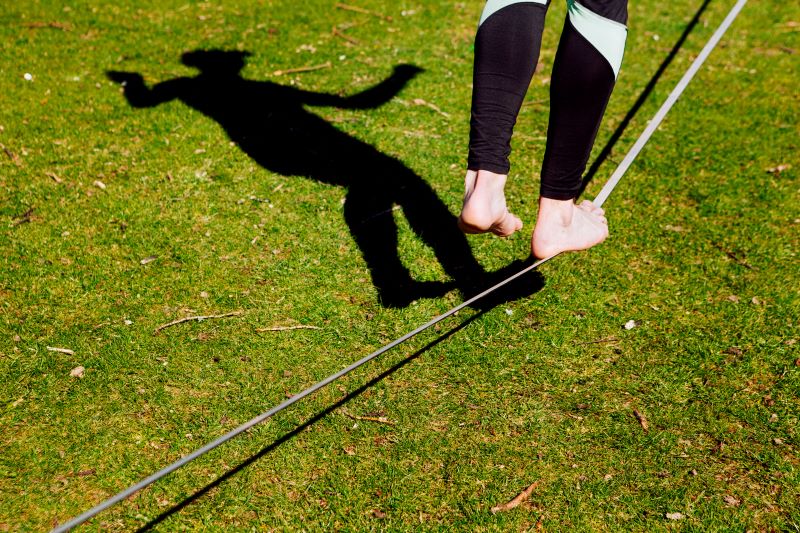
For this exercise, tie a string or rope to two ends of the floor. Now, extend your arms on both sides for balance, and start walking on the rope. Try to avoid taking support by holding anything on the sides. Keep walking on the rope in a straight line. It will help improve your walking balance.
14. Rock the Boat
This is another exercise for stability. Stand on the floor, keeping your feet hip-width apart. Now, yield your entire weight onto the left leg and lift the right knee upwards. Hold it up for at least 10 seconds. Now, bring it down and repeat the same for the left knee.
15. Flamingo Stand
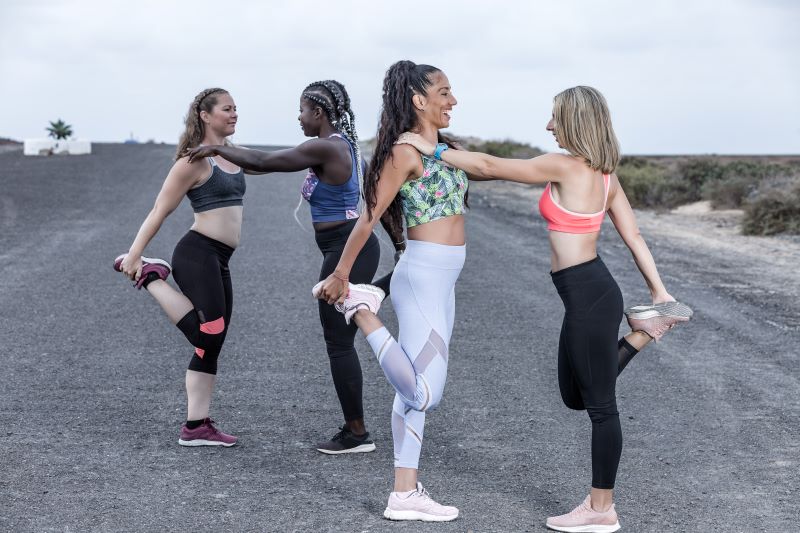
Start by standing on the floor on your left leg. Then, lift the right leg forward while taking support from a chair or wall. In the process, maintain good posture, keeping the neck, head, and spine in line. Once you get used to it, try extending your hand and reaching your feet. Maintain the position for at least 15 seconds. Then, repeat the procedure with the other leg.
16. Tree Pose

Tree pose, or Vrksasana is an excellent exercise for older adults to improve balance and strength. By standing on one leg and positioning the other foot against the inner thigh, calf, or ankle, this pose promotes stability and prevents falls. Additionally, the Tree Pose enhances muscle strength and supports better posture.
For Parkinson’s Patients
People with Parkinson's disease are likely to face weak balance, resulting in future threats and risks. They are likely to benefit from the following exercises to improve balance:
17. Chair Leg Raises
Sit on a chair with a straight spine, keeping both feet under your knees. Straighten your left leg while holding it up for a few seconds. After that, lower it down and repeat the process with the other leg. Keep repeating the process 4-5 times.
18. Side-Stepping
For this balance and stability exercise, stand on the floor and step sideways to the right corner of the room. Next, lift your knees as high as possible. Do this while moving, as if trying to step onto something. Then, return to the left side of the room and repeat with the other leg.
19. Tandem Standing
Tandem standing exercise is highly beneficial for Parkinson's patients, helping to improve balance and stability. By standing with one foot directly in front of the other, this exercise challenges and strengthens the muscles involved in maintaining balance. Regular practice can enhance coordination and reduce the risk of falls.
For Athletes
Athletes need proper balance as their work deals with physical activities. They might lose their balance because of any injuries. The following exercises can be helpful for them:
20. Banded Triplanar Toe Taps
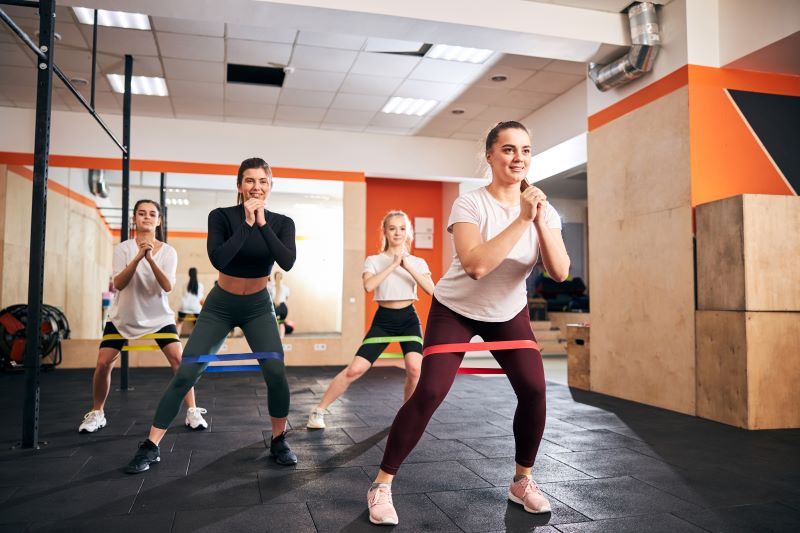
Start by putting a resistance band around your lower thighs above the knees. Then, start a single-leg, quarter-squat on your left leg while engaging your core and hip muscles. Tap your right leg forward, move it to the sides, and then straighten it. After repeating this 15-20 times, continue the same with the left leg.
21. Paloff Press
Start by standing before a cable machine and holding the cable handles with your hands. Walk to the right while extending your arms in front of your body. Keep your core engaged as you turn away from the machine. Maintain alignment with your body's centre line. After returning to the original position, repeat the exercise in the opposite direction.
22. Single Leg Hinge
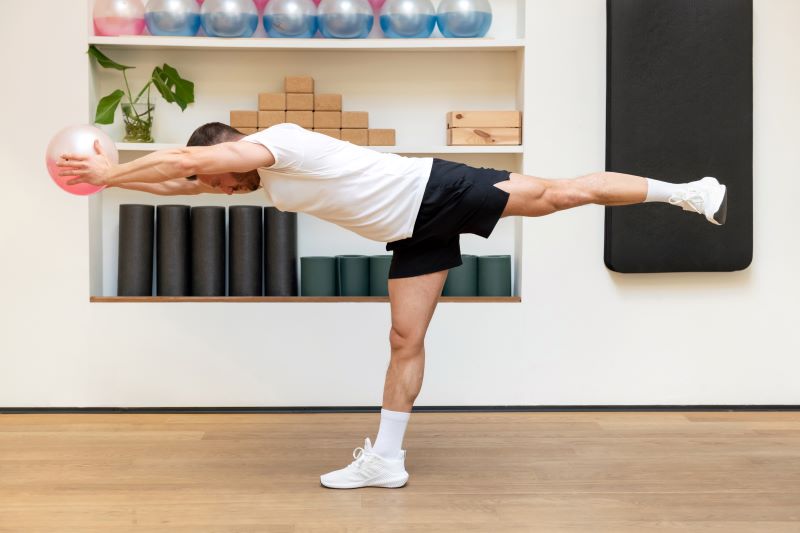
The single-leg hinge exercise is excellent for athletes. This exercise targets the glutes, hamstrings, and core muscles by standing on one leg and hinging forward at the hips while extending the other leg backwards.
Regular practice strengthens the lower body and stabilises muscles, improving athletic performance, enhancing proprioception, and reducing the risk of injury.
Types of Equipment Required for Balance Exercise
Using the right equipment can enhance the effectiveness of balance exercises. The table mentioned below lists different equipment required for different exercises:
Exercise |
Equipment Required |
| Bean Bag Balance | Bean bag |
| Hopscotch | Hopscotch grid |
| Sumo Squat | Dumbbell or Kettlebell |
| Arm Sequence With Lifted Heels | Dumbbell |
| Curtsy Lunge | Dumbbell |
| Tightrope Walk | Rope |
| Chair Leg Raises | Chair |
| Banded Triplanar Toe Taps | Resistance band |
| Paloff Press | Resistance band |
What Precautions Should be Taken While Exercising With a Weak Balance?
Exercising with a weak balance requires special attention to ensure safety and prevent falls. Here are some important precautions to keep in mind:
- Use Support: If needed, have a sturdy chair or wall nearby. This will provide stability and confidence, allowing you to focus on the exercise.
- Clear the Area: Ensure the exercise area is free from obstacles and clutter. A clean space reduces the risk of tripping or falling during movements.
- Wear Proper Footwear: Use non-slip, supportive shoes to prevent slipping. Proper footwear ensures a good grip on the floor, enhancing stability.
- Start Slowly: Begin with simple exercises and gradually increase the difficulty as balance improves. This will help your body adapt and prevent overexertion.
- Stay Hydrated: Drink plenty of water before, during, and after exercise. Proper hydration keeps your body functioning well and prevents dizziness.
- Listen to Your Body: Stop immediately if you feel dizzy, lightheaded, or experience pain. It's important to avoid pushing yourself too hard and causing injury.
In conclusion, multiple exercises for balance will help you maintain a proper posture and avoid losing control over your body. Moreover, these can help you if you have a weak balance to redeem the same. However, you must take the right precautions while working out.













